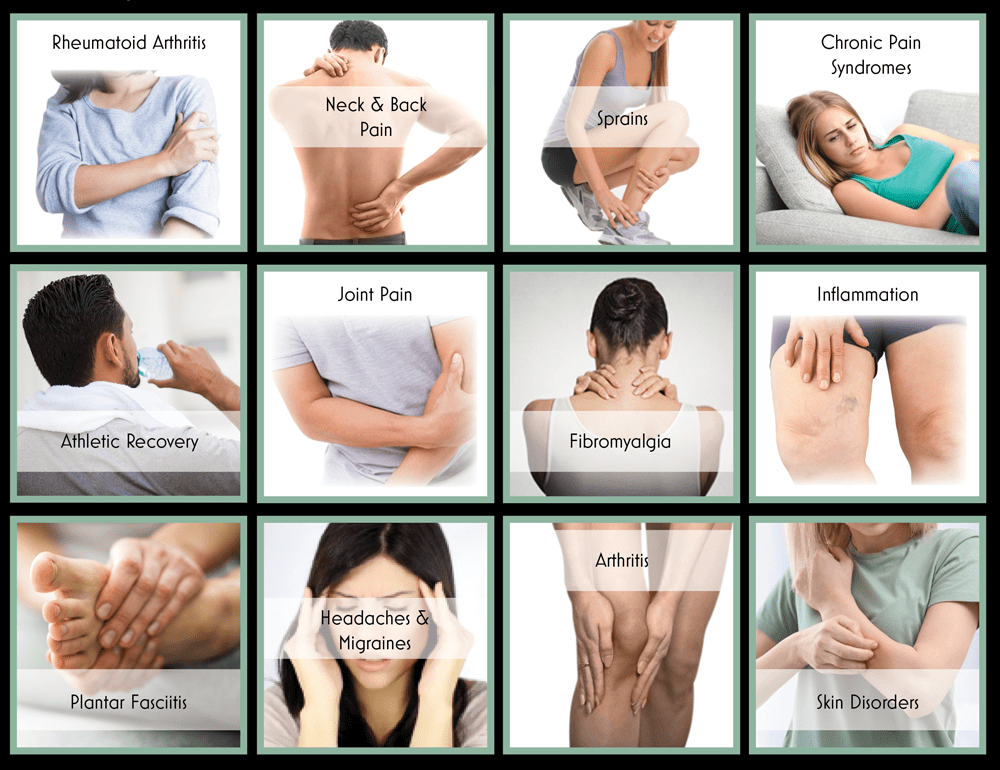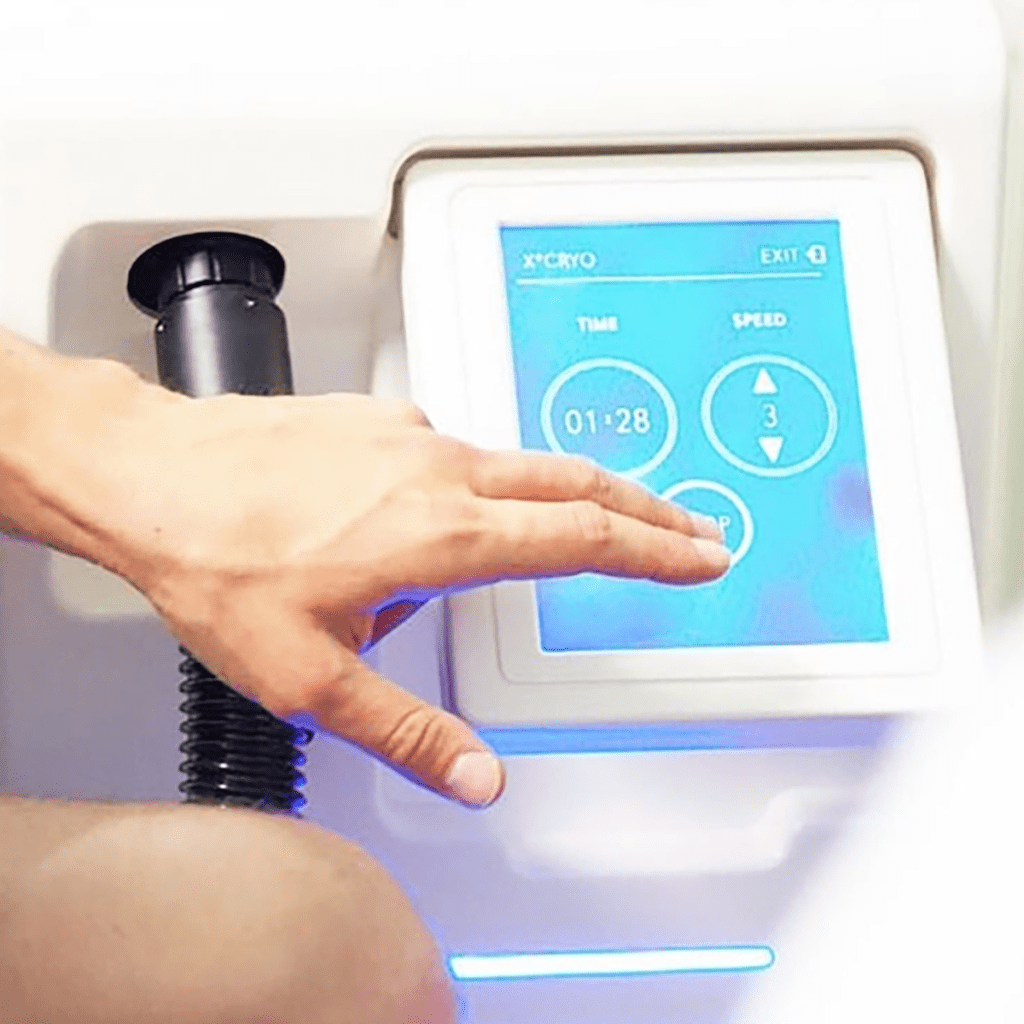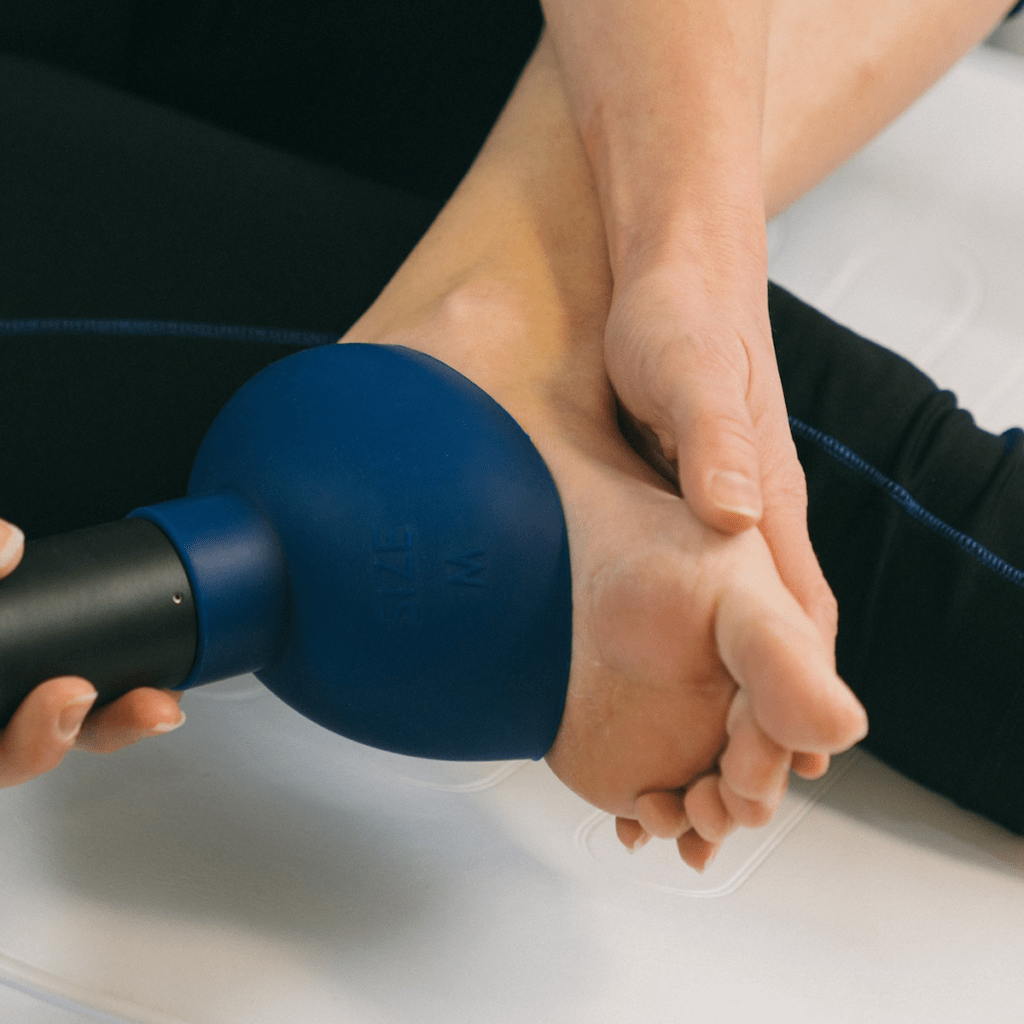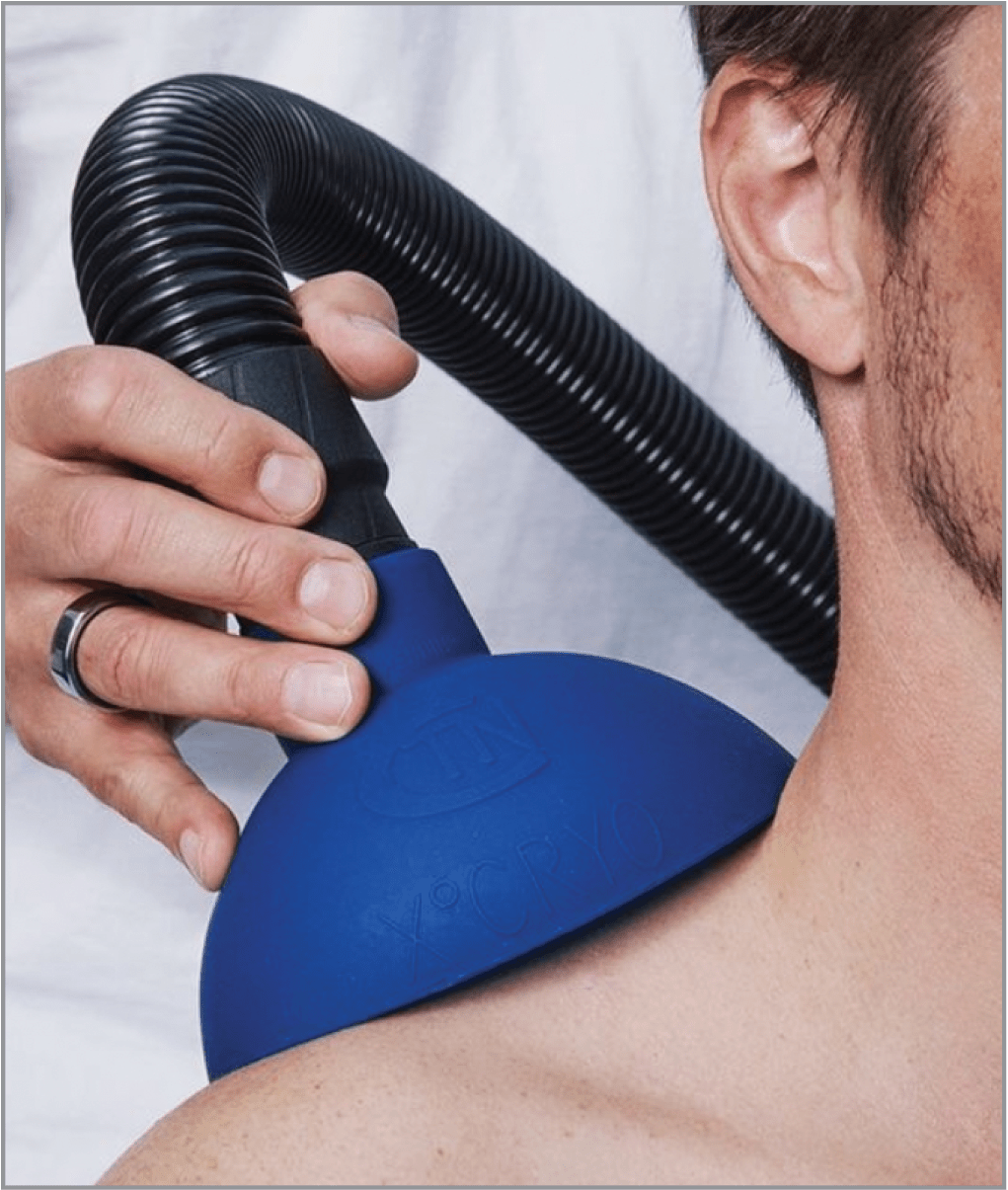
Local Cryotherapy
Local Cryotherapy is a targeted, safe, comfortable, non-invasive, fast treatment. It is based on the rapid and controlled cooling of tissue. This increases your body’s blood circulation to the local area which reduces inflammation, stimulates collagen production, returns nutrient filled regenerative blood supply to the area, as well as releases endorphins and the anti-inflammatory protein norepinephrine, which aids in the reduction of pain. Listed below are some of the benefits and conditions improved with CryoTherapy.

What is Cryotherapy?
Cryotherapy, also known as cold therapy, is the use of extremely cold temperatures for therapeutic purposes. Cold therapy has been used for treating inflammation and injuries for thousands of years, dating back to the time of the Egyptians. It has been rapidly advancing in technology since the first cryotherapy chamber was developed in 1978 by rheumatologist Dr. Yamaguchi. He utilized the treatment to help his RA patients manage pain. He concluded the rapid decrease of temperature to the skin created a release of endorphins and reduced pain & inflammation.
How does Local Cryotherapy work?
Cryotherapy exposes the skin and underlying tissue to extremely cold temperatures for several minutes. During the session, blood vessels narrow pushing inflammation, toxins, lymphatic fluid, and waste from the area through the body’s natural filtration system. As the area starts to rewarm and return to its normal state, blood vessels expand, allowing for regenerated blood supplied with anti-inflammatory proteins, nutrients, endorphins, and oxygen to flow back to the area. This helps with recovery, collagen production, and pain relief.

Local Cryotherapy Applicators
Various applicators allow to target different areas of the body effectively.

Cup Attachment

Wand Attachment
Local Cryotherapy FAQ’s
Does local cryotherapy use nitrogen?
Our state-of-the-art X°Cryo™ by Cryotech Nordic is the latest equipment in local cryotherapy solutions. It does not utilize nitrogen. The unit uses electricity to produce a high volume and velocity air flow with heat extraction technology for rapid and controlled cooling of the tissue.
What can I expect during a session?
Local Cryotherapy is administered through a handheld wand that targets a specific area of the body. It is a fast, non-invasive, and pain free treatment. The technician will select one of the various applicators to apply the most effective treatment. When applied, it will feel like a cold stream of air hitting the area. Throughout the session, the technician will monitor the skin’s temperature to ensure the body’s natural response to the cold is sufficiently stimulated.
What does a client wear during a treatment session?
The area of the body being treated will need to be bare of clothing, dry, free of lotions & metal jewelry, and unshaven for 24 hours before the application. We will provide you with a cover-up if needed.
How often should I do cryotherapy?
Local cryotherapy can be safely done as soon as the skin returns to normal temperature. While many patients experience the benefits after one session, we recommend multiple sessions within a short period of time. The impact of cryotherapy is cumulative, so the number of sessions and frequency depends upon your needs.
Is cryotherapy safe?
Yes, our staff is fully trained in the cold application and makes safety a top priority.
I have metal or plastic implants in my body, can I do local cryotherapy?
Yes, as the cold temperatures will not reach far enough beneath the surface of the skin.
Who should not use local cryotherapy?
Local cryotherapy is extremely safe with minimal risks. However, if you are currently pregnant, have a battery implanted device, or open wounds we may be unable to perform the therapy over certain areas of the body.
Is cryotherapy covered under insurance?
Cryotherapy currently is not covered by insurance; however, it may qualify to be used as an expense under your Health Savings or Flexible Spending Accounts. To find out you will need to contact and check with your individual provider.